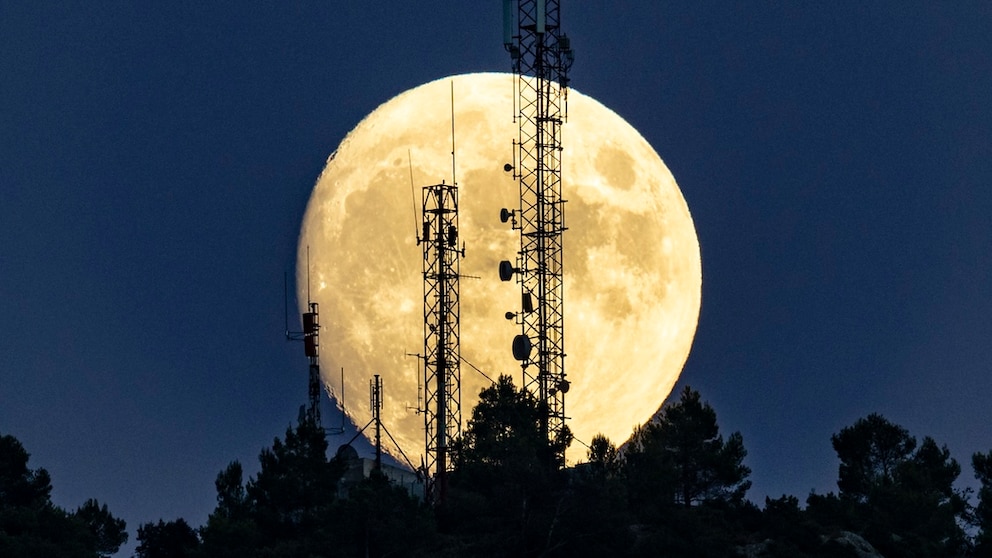February 20, 2025, 9:30 am | Read time: 4 minutes
When humans get back on Earth’s satellites, they must also be able to communicate with each other. That is why Nokia is to enable mobile communications on the moon.
Modern technologies enable us to connect with each other at any time, whether through the Internet or telephony. Mobile communications play a central role in this, as they make wireless and, therefore, location-independent communication possible in our everyday lives. Soon, its reach will extend beyond Earth. It has now been announced that Nokia will bring mobile communications to the moon. But why is this happening?
Nokia Is Bringing Mobile Communications to the Moon Because of the Artemis Mission
Since 2017, the US space agency NASA has been planning to send humans to the Earth’s satellite again. As part of this, it has launched the Artemis mission, which is to go through several stages. Artemis 1, which was an unmanned test run for the Space Launch System (SLS) and the Orion spacecraft, was launched at the end of 2022. A manned space expedition is due to land on the moon with Artemis 3 at the latest. According to NASA, the launch is planned for mid-2027.
Selected astronauts will then embark on more than just a brief visit to space. Instead, the aim is to establish a permanent presence in the 2030s. As MIT Technology Review now reports, this will require the appropriate infrastructure. That is why the private company Intuitive Machines, which has already taken equipment to the moon, is to send more equipment. Among the equipment being sent is Nokia’s technology for mobile communications on the moon.
Nokia Has Developed a Special 4G Network for the Moon
The Finnish manufacturer has advanced the necessary developments on behalf of NASA. The 4G network on the moon is expected to enable higher data transmission rates, wider coverage, and simultaneous networking of multiple devices. The individual components must, of course, be able to cope with the special conditions on the moon. These include radiation and extreme temperatures. But they also have to withstand turbulence and vibrations during take-off and landing.
While it may seem like standard Earth communication, this technology will significantly upgrade lunar communications. Until now, people have communicated in space using point-to-point radio systems. These require a direct line of sight between the transmitter and the receiving antenna. This is perfectly sufficient for individual vehicles or rovers to transmit data to Earth. With several people on research missions in space in the future, a correspondingly more powerful communication network will be required.
First Test Phase Planned
The entire network should fit into one box. Only the antenna will be sent separately on board a lander. Solar panels will ensure the energy supply. In a first attempt, the hardware will establish communication between the lander and two vehicles. This system may only function for a few days before the lunar night falls and temperatures plummet.
In the long term, Nokia would also like to make mobile communications on the moon 5G-compatible. In addition, the integration of mobile communications in future suits for astronauts has already been considered.

First impression Are robots that recognize emotions on the way? LG unveils prototype at IFA 2024

From the Dawn of Mobile Communications Why Pagers Are Still in Use Today

Did You Know? What is the Difference Between WLAN and WiFi?
Possible Problems for Mobile Communications on the Moon
However, there are still a few hurdles to overcome. For example, it is said that LTE networks normally operate on a frequency range between 700 MHz and 2.6 GHz. However, this means that they would overlap with frequencies that are actually reserved for radio astronomy. Signals from the moon could, therefore, interfere with research observations.
There are also regulatory restrictions. Nokia has been granted a one-off exemption for the first test. However, the LTE band is not actually one of the radio frequencies that were once defined internationally to support lunar missions. A 4G network in space would, therefore, violate such guidelines. However, they are already looking for alternatives that can be used.
It is not yet clear to what extent smartphones are even being considered. These would also have to be made fit for space in the long term. We might soon see the development of a specialized iPhone designed for space conditions.

